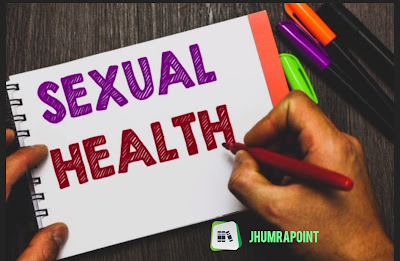Sexual and reproductive health is an important aspect of overall health and well-being, yet it is often a topic that is not discussed openly or honestly. This guide aims to provide an overview of sexual and reproductive health, including the various components of it, the challenges that people may face, and ways to improve it.
What is Sexual and Reproductive Health?
Sexual and reproductive health refers to the physical, emotional, and social well-being related to sexual activity and reproduction. It encompasses a wide range of issues, including contraception, pregnancy, childbirth, and menopause, as well as sexually transmitted infections (STIs) and sexual dysfunction.
Components of Sexual and Reproductive Health:
- Contraception: Contraception is the use of methods to prevent pregnancy. There are various types of contraception, including hormonal methods, barrier methods, and intrauterine devices (IUDs).
- Pregnancy and Childbirth: Pregnancy and childbirth are natural processes that occur in the female reproductive system. However, there are many potential complications that can arise during these stages, such as miscarriage or preterm labor.
- Menopause: Menopause is the natural end of menstruation and fertility that occurs in women. It is a normal part of aging, but can cause physical and emotional symptoms.
- Sexually Transmitted Infections (STIs): STIs are infections that are spread through sexual contact. They can cause a wide range of symptoms and can have serious long-term consequences if left untreated.
- Sexual Dysfunction: Sexual dysfunction refers to problems that can occur during sexual activity, including difficulty becoming aroused, difficulty reaching orgasm, and pain during intercourse.
Challenges in Sexual and Reproductive Health:
- Access to healthcare: Many people face barriers to accessing healthcare, including lack of insurance, lack of transportation, and lack of information about available services.
- Stigma and discrimination: Stigma and discrimination can make it difficult for people to seek help for sexual and reproductive health issues. This is particularly true for marginalized communities, such as those who are LGBTQ+ or low-income.
- Lack of education: There is often a lack of comprehensive sexual education in schools and other settings. This can lead to misunderstandings and misconceptions about sexual and reproductive health.
Improving Sexual and Reproductive Health:
- Access to healthcare: Improving access to healthcare is crucial in ensuring that everyone has the opportunity to take care of their sexual and reproductive health. This can include expanding Medicaid, providing transportation assistance, and increasing funding for community health clinics.
- Education and awareness: Education and awareness are key in reducing stigma and discrimination and promoting understanding of sexual and reproductive health. This can include comprehensive sex education in schools, public health campaigns, and increasing access to information and resources.
- Advocacy and policy change: Advocacy and policy change are necessary to address the systemic issues that impact sexual and reproductive health. This can include lobbying for laws that protect reproductive rights and working to change policies that limit access to healthcare.
Family Planning:
Family planning is the process of planning and preparing for pregnancy and childbirth. This can include the use of contraception, as well as other methods such as fertility awareness and natural family planning. Family planning allows individuals and couples to make informed decisions about when to have children and how many children to have.
Abortion:
Abortion is the intentional termination of a pregnancy before the fetus is capable of surviving outside the womb. It is a legal and safe procedure that is an important aspect of reproductive health care. However, access to abortion varies widely across the world, and many individuals face barriers to accessing safe and legal abortion services.
Reproductive Rights:
Reproductive rights refer to the rights of individuals to make decisions about their own reproductive health, including decisions about pregnancy, childbirth, and family planning. This includes the right to access safe and legal abortion, as well as the right to access contraception and other reproductive health services.
Mental Health and Sexual and Reproductive Health:
Mental health and sexual and reproductive health are closely linked. Many individuals experience emotional and psychological symptoms associated with sexual and reproductive health issues, such as depression, anxiety, and stress. Additionally, some individuals may experience sexual dysfunction, such as sexual pain or low libido, as a result of mental health conditions.
Gender-based violence:
Gender-based violence (GBV) affects people of all gender identities, however it disproportionately affects women and girls. GBV includes physical, sexual, psychological and economic harm, and is often linked to power imbalances between men and women. GBV can have long-lasting and severe impacts on the physical and mental health of survivors, and can also affect their sexual and reproductive health.
It's important to note that sexual and reproductive health is a complex and multifaceted issue that affects people of all genders and ages, and it is important that everyone has access to accurate information and appropriate care. This includes education and awareness programs, access to healthcare services, and policies that protect and promote reproductive rights
Conclusion:
Sexual and reproductive health is an important aspect of overall health and well-being. It encompasses a wide range of issues, including contraception, pregnancy, childbirth, and menopause, as well as sexually transmitted infections (STIs) and sexual dysfunction. Improving sexual and reproductive health requires addressing barriers to healthcare, reducing stigma and discrimination, and increasing education and awareness. Everyone has the right to access the information, resources, and healthcare they need to take care of their sexual and reproductive health.

